|
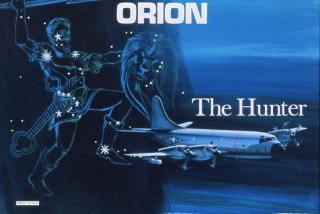
The P-3 Orion is a four jet turboprop aircraft made by Lockheed for
the Navy, beginning in the early 1960s. It is named Orion for
the mythical hunter of the same name. The Orion could remain aloft
for up to 19 hours without refueling. We normally carried three
pilots, who exchanged seats every four hours.
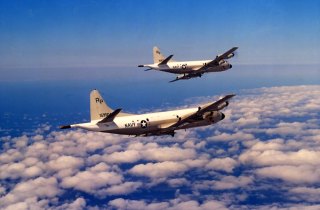
The P-3 Orion underwent near-continuous upgrades to keep pace with advancing
sensor technology. When I came to the Black Lightnings (VP-31)
they were flying TP-3As’, P-3Bs, P-3 Charlie baselines (shown
here), Charlie Update Is, Updates II’s and Update III’s.
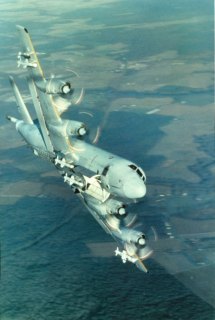
The P-3 Orion was a substantial offensive threat, capable of carrying
6 homing torpedoes in an internal bomb bay (shown open here), nuclear-tipped
depth charges, or an array of missiles, such as the four Harpoon anti-ship
missiles shown on this aircraft.
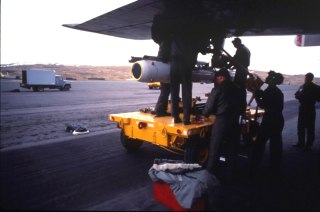
Crewmen loading an AGM-84D Harpoon on the outer ordnance shackles of
a P-3 Orion. The Harpoon is all weather over-the-horizon air-to-surface
antiship missile which carries 488 pounds of high explosives.
It has been carried by P-3s since 1979.
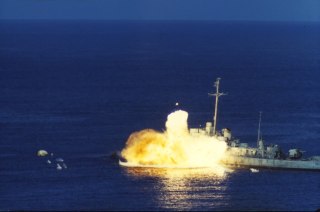
Harpoon missile hitting an retired destroyer at the Pacific Missile
Test Range off Point Mugu.
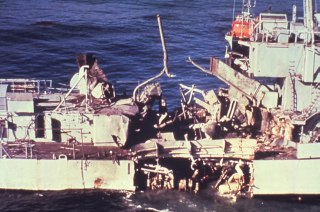
The Harpoon penetrates the interior of the target before detonation,
creating enormous damage. This shows the damage a single Harpoon
did to a destroyer during a test firing. My poignant memory of Harpoon
live firing exercises was the time we zapped an Indian freighter near
the Hawaiian Islands who had negligently disregarded all of our NOTAMs
- Ouch! That'll teach ya to read your message traffic!
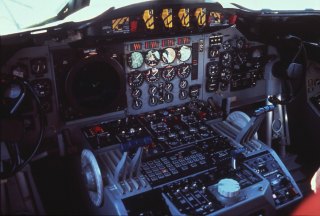
Cockpit of a P-3C, which was considerably modernized compared to older
variants (we called the P-3B the "Bravosaurus"). The
C model used the APS-115 surface search radar, which was a remarkable
asset, capable of detecting all kinds of little things sticking out
of the water.
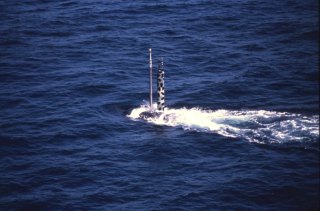
Submarines carry all kinds of extendable devices in their sail which
allow them to sense above the ocean's surface. This is a close-up
view of a periscope (on left) and other electronic surveillance and
communications probes. We could easily detect periscopes with
our APS-115 radar, but we had much better results tracking subs passively,
from over-the-horizon.
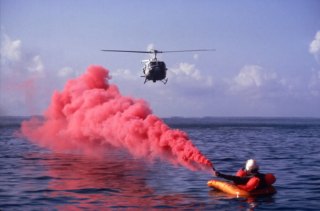
All aircrew must undergo a rigorous water survival training syllabus,
with a renewal course every three years. This shows a student
deploying a Mk 13 smoke flare to aid the helicopter in finding him.
The calm waters of Pensacola Bay (pictured here) are stark contrast
to the open ocean, which is never this calm.
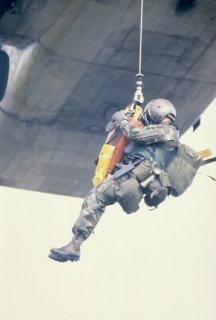
Here’s a successful “pick” of an air crewman by a
Navy CH-46 chopper. We routinely carried 37 pounds of flight gear,
including our boots. Having grown up swimming everyday of my childhood
helped immensely.
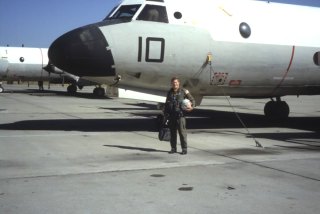
That's me standing in front of Romeo Papa ONE ZERO of VP-31 on October
3, 1990, after completing my last NATOPS check flight qualifying for
my NAO wings.
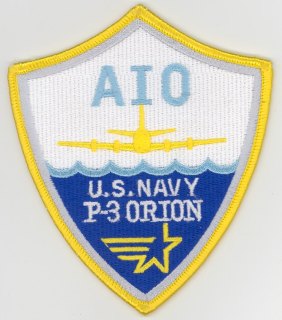
I was the first Air Intelligence Officer in Patrol Wings Pacific Fleet
to become aircrew qualified in the P-3 Orion. Lockheed sent me
five specially configured “AIO” shoulder patches for my
flight suits. I thought that was pretty neat!
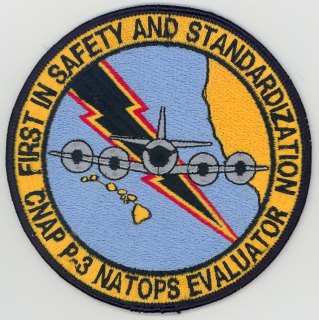
The most coveted role in the maritime patrol aviation community was
to be a CNAP-NATOPS (Commander Naval Air Forces Pacific - Naval Air
Training and Operating Procedures Standard) evaluator. Like TTT,
these fellows were selected from VP-31 and were regarded as the ultimate
experts in the operation of P-3's. They were treated like VIPs
by whatever squadrons they visited, so I always liked traveling with
them.
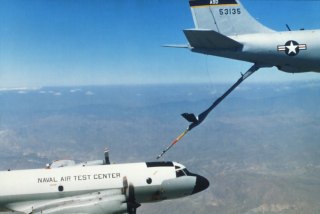
Some of the research which we were associated included air-to-air refueling
tests of P-3 Orions, such as that shown here out of Point Mugu from
an Air Force KC-135.
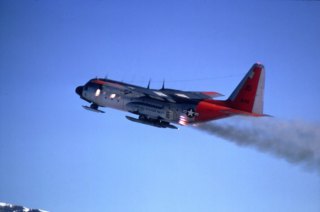
Each year we got an opportunity to exchange places temporarily with
crews of Navy LC-130s, Air Force and Coast Guard crews flying different
versions of the C-130, because the Hercules aircraft used the same Allison
T-56 turboprop engines as our P-3s. This view shows an LC-130
one taking off from Antarctica using Jet Assisted Takeoff (JATO) packs.
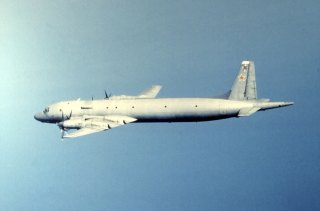
In-flight view of a Soviet IL-38 May maritime patrol aircraft, the Russian
equivalent of our P-3 Orion.
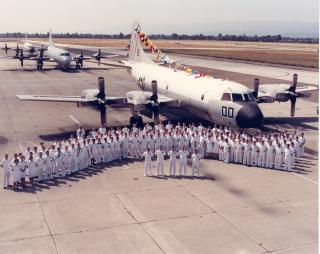
The Patron Master Augment Unit at NAS Moffett Field, just before we
were disestablished in late 1991. VP-MAU was a novel concept in the
reserve force, augmenting active duty units wherever they needed help.
I was proud to be a part of this elite unit who was working at the cutting
edge of Navy VP operations, not just collecting pay to take correspondence
courses.
Questions
or comments on this page?
E-mail Dr. J David Rogers at rogersda@mst.edu.

|